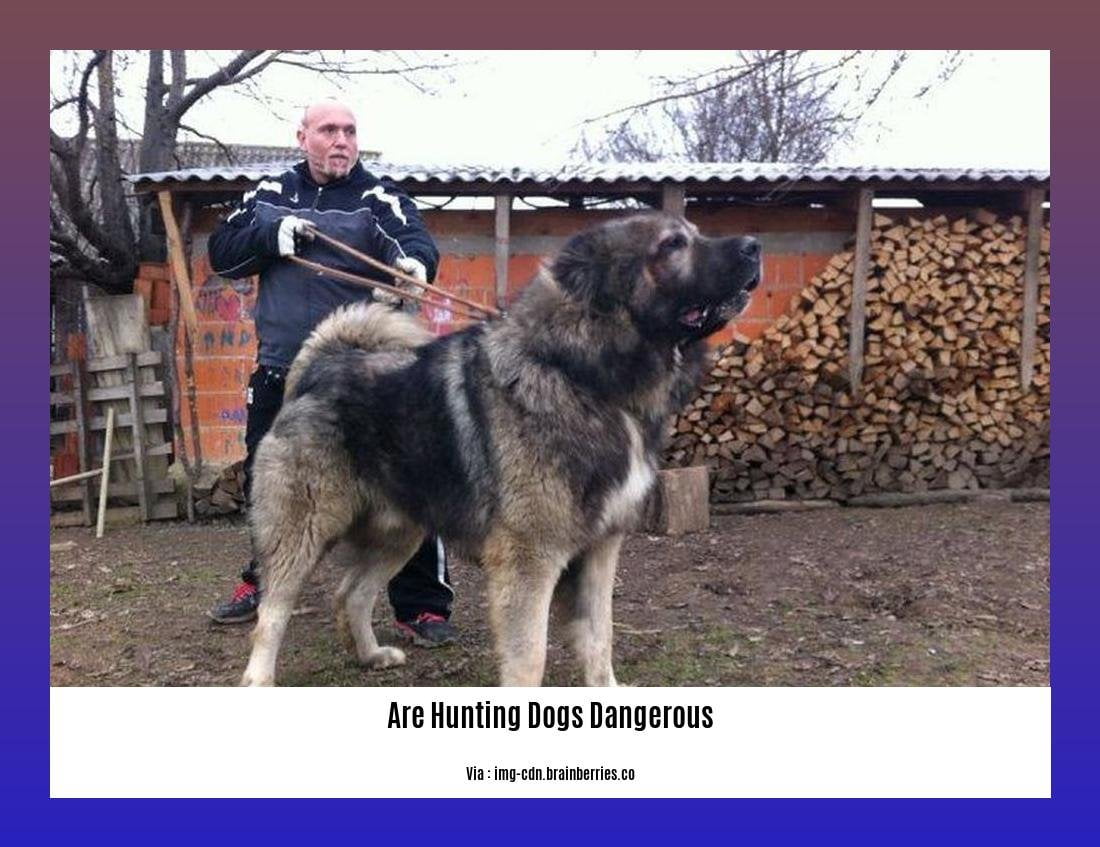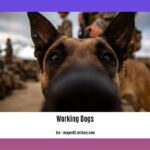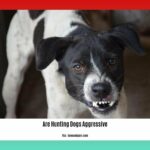Exploring the Potential Risks: Are Hunting Dogs Dangerous?
Hunting dogs, with their impressive skills and unwavering loyalty, have long been a beloved part of the outdoor sports community. These remarkable canines have played a crucial role in helping hunters track and retrieve game for centuries. However, in the pursuit of adventure and the thrill of the hunt, it’s important to acknowledge and understand the potential risks that come with interacting with these highly trained animals. In this article, we delve into the question on every outdoor enthusiast’s mind: are hunting dogs dangerous? Through a comprehensive exploration of their behavior patterns and real-life encounters, we address this pressing issue and provide practical tips on how to ensure a safe and enjoyable hunting experience.
Key Takeaways:
- Hunting with dogs is criticized for being cruel to the animals being hunted and causing them pain and fear.
- Using dogs for hunting can disrupt local ecosystems and have a negative impact on wildlife behavior.
- Dogs can result in meat damage by locating wounded animals before hunters do and swarming the fallen prey.
- Ethical objections arise from using animals for sport and causing unnecessary suffering to hunting dogs.
- Sustainable and humane alternatives should be considered for managing animal populations.
Are Hunting Dogs Dangerous?
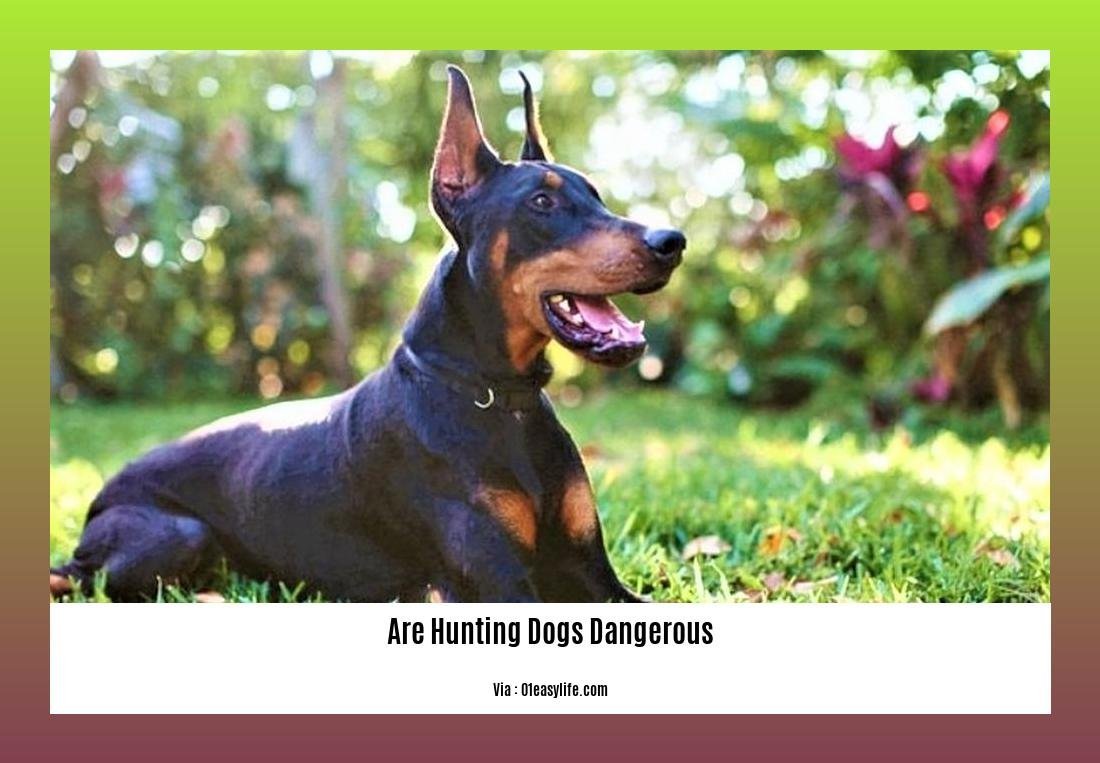
Hunting dogs are often seen as loyal and skilled companions in the world of hunting. With their keen sense of smell and natural instincts, these trained canines play a crucial role alongside hunters in tracking and retrieving game. However, it is essential to understand that, like any animal, these dogs have the potential to pose certain risks. In this article, we will explore the potential dangers associated with hunting dogs and provide practical tips on how to minimize these risks for a safer and more enjoyable hunting experience.
The Nature of Hunting Dogs
Before delving into the risks, it’s important to acknowledge and appreciate the unique characteristics of hunting dogs. These canines, bred for centuries to assist in hunting, possess exceptional skills and instincts that make them invaluable assets in the field. From pointing and flushing out game to tracking and retrieving it, hunting dogs are highly trained and are capable of fulfilling various tasks to aid hunters.
Understanding the Risks
While hunting dogs can be a valuable asset, it’s essential to recognize and address the potential risks associated with their presence during a hunt. Here, we will explore some of the primary risks hunting dogs may pose:
1. Aggression and Attacks
Any dog, regardless of its training, has the potential to display aggression or become defensive in certain situations. It is crucial for both hunters and non-hunters to exercise caution and understand the signs of aggression in hunting dogs. Proper training and socialization can minimize the risk of aggressive behaviors, ensuring a safe and controlled hunting environment.
2. Injuries from Dogs and Game
During the heat of a hunt, with the excitement and adrenaline running high, accidents can happen. Both hunters and bystanders can be at risk of sustaining injuries from hunting dogs or even from the game being pursued. A startled or wounded animal may react aggressively towards humans, potentially leading to injuries. Maintaining a safe distance, using appropriate protective gear, and following proper hunting protocols can help mitigate these risks.
3. Health Concerns
Hunting dogs often traverse various terrains, encountering potential hazards that may endanger their health. They can encounter venomous snakes, ingest harmful substances, or suffer from injuries while navigating through rugged landscapes. Additionally, hunting dogs may come into contact with diseased wildlife, potentially exposing themselves and their handlers to various infections. Regular veterinary check-ups, vaccinations, and preventive measures can help safeguard the health of these canines and mitigate health-related risks.
4. Training and Handling
Proper training and handling are pivotal in managing hunting dogs’ behavior and ensuring their effectiveness in the field. Inadequate training or insufficient control over these canines may lead to unruly behavior, compromising the safety of the hunting party. It is crucial for hunters to invest time and effort into comprehensive training programs, seeking guidance from experienced trainers if necessary.
Minimizing Risks for a Safer Hunting Experience
Now that we have explored the potential risks associated with hunting dogs, let’s shift our focus to practical tips for reducing these risks and promoting a safer hunting experience:
1. Training and Socialization
Enroll your hunting dog in a reputable training program that focuses on obedience, socialization, and specific hunting tasks. This will help ensure that your dog understands commands and behaves appropriately in various hunting situations. Regular exposure to different environments, game scents, and interactions with other dogs and humans is also vital for their socialization and adaptability.
2. Proper Protective Gear
Invest in appropriate protective gear, both for yourself and your hunting dog. This may include items such as blaze orange clothing, protective vests for dogs, and other accessories designed to enhance visibility and reduce the risk of injuries during the hunt. Remember, ensuring the safety of both you and your dog is of utmost importance.
3. Clear Communication and Signals
Establish a clear system of communication and signals with your hunting dog. Consistent verbal commands and non-verbal cues will help direct your dog’s actions and minimize confusion during the hunt. This clear communication ensures that your dog understands what is expected and reduces the risk of unpredictable behaviors that may jeopardize the safety of the hunting party.
4. Regular Health Check-ups
Schedule regular appointments with a veterinarian to ensure that your hunting dog is in good health. Vaccinations, parasite prevention, and routine wellness exams are crucial for maintaining your dog’s well-being and reducing the risk of potential infections or health-related issues during the hunt.
5. Continuous Supervision
Always keep a close eye on your hunting dog during a hunt. Monitor their behavior, assess any potential signs of fatigue or stress, and provide them with necessary breaks, food, and water as needed. Continuous supervision allows you to address any potential risks promptly and ensure the overall safety and well-being of both you and your hunting dog.
Conclusion
Hunting dogs, with their specialized skills and training, can greatly enhance the hunting experience. However, it is important to be aware of the potential risks associated with their presence. By understanding these risks and implementing appropriate measures, such as proper training, protective gear, and diligent supervision, you can minimize the dangers and create a safer hunting environment for both you and your loyal canine companion.
Are you curious about emotional support animals? Find out more about them here.
Planning to travel with your emotional support animal? Discover if they are allowed in hotels here.
Concerned about the aggression of hunting dogs? Learn more about whether hunting dogs are aggressive here.
Potential Risks and Dangers Associated with Hunting Dogs
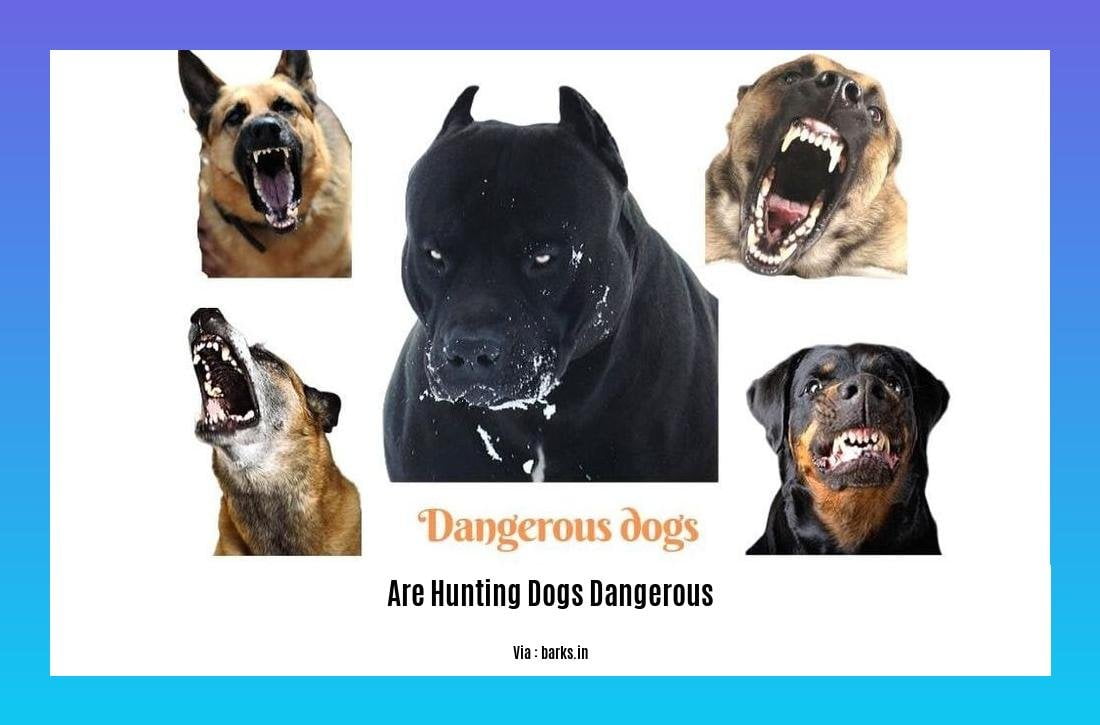
Hunting dogs are often seen as loyal and skilled companions in the world of hunting, valued for their unique skills and instincts. However, it’s important to acknowledge that there are potential risks and dangers associated with hunting dogs that both hunters and dog owners should be aware of.
Challenges Faced by Hunting Dogs
-
Non-accidental injuries from other animals or hunters: Hunting dogs are exposed to dangerous situations where they may encounter aggressive animals or be accidentally injured by other hunters. These situations can pose a serious risk to the well-being of hunting dogs.
-
DIY vet treatment to hide illegal activity or avoid costs: Some hunters may resort to do-it-yourself veterinary treatment for their dogs to conceal illegal hunting activities or to avoid expenses associated with professional veterinary care. This can lead to inadequate treatment and potential complications for the dogs.
-
Dogs used and abandoned for hunting when they are no longer useful: Hunting dogs that are no longer useful for hunting purposes are often abandoned by their owners. This abandonment can result in neglect and mistreatment, posing physical and emotional risks to the dogs.
-
Physical and mental scars from hunting: Hunting dogs can suffer long-lasting physical and psychological scars as a result of their participation in hunting activities. These scars can impact their overall well-being and quality of life, affecting their ability to perform their duties effectively.
-
Purposeful harm to animals by hunters or poachers: Unfortunately, some hunters or poachers engage in purposeful harm towards hunting dogs or other animals. This harmful behavior causes unnecessary suffering and pain, endangering the well-being of the dogs involved.
Negative Impacts of Hunting on Wildlife
Hunting with dogs can also have significant negative impacts on wildlife populations and ecosystems. It’s crucial to be aware of these impacts to ensure the ethical treatment of hunting dogs and the preservation of biodiversity in our ecosystems.
-
Destruction of habitats: Hunting activities can contribute to the destruction of natural habitats, especially when excessive hunting occurs in specific areas. This destruction disrupts ecosystems and can have cascading effects on wildlife populations, leading to imbalances in the natural environment.
-
Endangerment and killing of young animals: Hunting often targets adult animals, which can lead to the endangerment and killing of young animals. This disrupts the reproductive cycles of wildlife species and can contribute to population declines, affecting the overall health and stability of wildlife populations.
-
Vulnerability and terror to extinction: The indiscriminate killing of animals through hunting leaves remaining populations vulnerable and terrified. This fear impacts their ability to thrive and reproduce, increasing the risk of extinction for certain species. It’s essential to practice responsible hunting methods to minimize these negative consequences.
Key Takeaways:
- Hunting dogs face challenges such as non-accidental injuries, abandonment, and physical and mental scars from hunting.
- DIY vet treatment to hide illegal activities and purposeful harm by hunters or poachers are also risks for hunting dogs.
- Hunting activities can lead to habitat destruction, endangerment of young animals, and increased vulnerability to extinction.
- It’s important to prioritize the well-being of hunting dogs and practice responsible hunting methods to minimize negative impacts on wildlife populations and ecosystems.
To learn more about the potential risks and dangers associated with hunting dogs, you can refer to the following sources:
- RSPCA: Hunting With Dogs | Wildlife Crimes
- Precision Outdoors: The Pros And Cons Of Deer Hunting
Tips for Minimizing Risks and Ensuring Safety When Interacting with Hunting Dogs
Hunting dogs are valuable companions in the field, but it’s essential to be aware of the potential risks involved in their interaction. To ensure a safe and enjoyable hunting experience for both humans and dogs, here are some tips for minimizing risks and ensuring safety when interacting with hunting dogs.
Training and Socialization are Key
1. Proper training ensures control: Before taking hunting dogs out on a hunt, it’s crucial to invest time in their training. This includes obedience training, recall commands, and exposure to different hunting scenarios. [Source 1]
2. Encourage socialization: Socializing your hunting dogs from an early age exposes them to different environments, people, and animals, reducing the risk of aggressive behavior towards humans or other animals during hunts. [Source 1]
Safety Precautions for Hunting Dogs
3. Protective gear is essential: Equip your hunting dogs with appropriate protective gear, such as reflective vests and boots, to protect them from injuries, especially when hunting in rough terrain or during low-light conditions. [Source 2]
4. Clear communication and signals: Establish clear communication and signals with your hunting dogs to guide their behavior and actions in the field. Utilize dog whistles and hand signals to ensure effective and precise direction. [Source 2]
5. Regular health check-ups: Schedule regular health check-ups for your hunting dogs to identify any underlying health issues that may impact their performance or behavior. Regular vaccinations and parasite prevention are also essential.
[Source 1]
6. Continuous supervision during hunts: Always keep a watchful eye on your hunting dogs during hunts to prevent accidents, ensure their safety, and avoid unwanted encounters with other animals or hunters. Treat your hunting dogs as your fellow hunters and prioritize their well-being. [Source 3]
Additional Tips for a Safer Hunting Experience
7. Gradual introduction to gun sounds and hunting equipment: Introduce your hunting dogs to the sounds of gunshots and to hunting equipment gradually. This desensitization process helps prevent fear or anxiety and ensures they remain calm and focused during hunts. [Source 2]
8. Crate training for safe transportation: Proper crate training not only keeps hunting dogs safe during transportation but also provides them with a safe and secure space where they can rest and recover during breaks in the hunting day. [Source 2]
9. Be aware of your dog’s location: Stay vigilant and maintain constant awareness of your hunting dog’s location while hunting. This prevents accidental injuries or separations in unfamiliar terrain. [Source 3]
Remember, by following these tips and taking necessary precautions, you can create a safer hunting environment for yourself and your hunting dogs, minimizing risks and ensuring an enjoyable experience for everyone involved.
Key Takeaways:
- Proper training and socialization are essential for safe interaction with hunting dogs.
- Equipping hunting dogs with protective gear, clear communication, and regular health check-ups are crucial for their safety.
- Continuous supervision and treating hunting dogs as fellow hunters minimize risks during hunts.
- Gradual introduction to gun sounds and crate training are additional safety measures to consider.
- Being aware of your hunting dog’s location and maintaining vigilance throughout the hunt is essential.
Sources:
- American Kennel Club – Hunting With Dogs: Training & Safety Tips
- American Hunter – 4 Safety Tips for Hunting Dogs
The Importance of Proper Training and Responsible Ownership of Hunting Dogs
Hunting dogs, when properly trained and responsibly owned, can be invaluable companions in the field. However, it is essential to recognize the potential risks associated with hunting dogs and take appropriate measures to ensure their safety and the safety of others. In this article, we will explore the importance of proper training and responsible ownership of hunting dogs, shedding light on the potential dangers and offering practical tips for a safer hunting experience.
Exploring the Potential Risks: Are Hunting Dogs Dangerous?
Non-accidental injuries from other animals or hunters
Hunting dogs often find themselves in risky situations where they may encounter aggressive animals or accidental injuries from other hunters. It is crucial for owners to be aware of these dangers and take steps to minimize the risks.
DIY vet treatment to hide illegal activity or avoid costs
Some hunters may resort to DIY veterinary treatment for their dogs to conceal illegal hunting activities or avoid the expenses of professional care. This can have detrimental effects on the well-being and health of hunting dogs.
Dogs used and abandoned for hunting when they are no longer useful
Sadly, hunting dogs that are no longer useful for hunting purposes are sometimes abandoned by their owners. This practice leads to neglect and mistreatment, impacting the physical and mental well-being of these dogs.
Physical and mental scars from hunting
Hunting dogs can suffer long-lasting physical and psychological scars as a result of their participation in hunting activities. These scars can significantly affect their overall well-being and quality of life.
Purposeful harm to animals by hunters or poachers
Unfortunately, there are instances where hunters or poachers intentionally harm hunting dogs or other animals, inflicting unnecessary suffering and pain. Responsible ownership and training can help mitigate these risks.
Tips for Minimizing Risks and Ensuring a Safer Hunting Experience
-
Proper Training and Socialization: Adequate training and socialization are crucial for hunting dogs to understand boundaries and behave appropriately in various hunting environments. From a young age, dogs should be exposed to different people, animals, and situations to develop good social skills.
-
Clear Communication and Signals: Establishing clear communication between the owner and the hunting dog is essential for maintaining control and avoiding potential risks. Dogs should respond reliably to commands and signals even in high-stress situations.
-
Regular Health Check-ups: Regular veterinary check-ups are vital to ensure the overall health and well-being of hunting dogs. Vaccinations, parasite control, and general health assessments should be part of their routine care.
-
Safety Gear: It is important to provide hunting dogs with appropriate safety gear, such as reflective vests and protective boots, to prevent injuries and increase visibility in the field.
-
Supervision: Continuous supervision during hunting expeditions is crucial to monitor the behavior and well-being of hunting dogs. This ensures their safety and prevents any potential conflicts with wildlife or other hunters.
-
Introduction to Gun Sounds: Introducing hunting dogs to the sound of guns is a vital part of their training. Gradual exposure to gun sounds helps prepare dogs for the hunting experience and reduces the risk of fear or anxiety associated with loud noises.
Key Takeaways:
- Proper training and responsible ownership of hunting dogs are essential for a safe and enjoyable hunting experience.
- Risks associated with hunting dogs include non-accidental injuries, DIY vet treatment, abandonment, physical and mental scars, and purposeful harm.
- Training, socialization, clear communication, regular health check-ups, safety gear, and supervision are important measures for minimizing risks.
- Introducing hunting dogs to gun sounds is important to prepare them for the hunting experience.
- Responsible ownership and training contribute to the well-being of hunting dogs and the preservation of biodiversity.
Sources:
– Armory Daily: Not harmful to wildlife
– Made to Hunt: Socialization training
– VCA Animal Hospitals: Historical significance and modern role
– Hunting Dog Training: Introduction to gun sounds
– Project Upland: Overall importance of hunting dogs
FAQ
Q1: Are hunting dogs dangerous to humans?
A1: While hunting dogs are trained to assist in hunting activities, they can potentially pose risks to humans if not properly managed. These risks include accidental injuries from the dogs themselves or encounters with aggressive animals while in the field.
Q2: What are the potential dangers of interacting with hunting dogs during a hunt?
A2: Interacting with hunting dogs during a hunt can present certain risks such as bites or scratches, especially if the dogs are not well-trained or have aggressive tendencies. Additionally, there is a possibility of unintentional injuries due to dogs’ swift movements or excitement in the hunting environment.
Q3: How can hunters minimize the risks posed by hunting dogs?
A3: Hunters can take several precautions to mitigate the risks associated with hunting dogs. It is important to ensure that the dogs are well-trained, socialized, and obedient. Additionally, hunters should maintain a safe distance from the dogs during the hunt and avoid approaching unfamiliar or aggressive dogs.
Q4: What measures can be taken to mitigate the potential dangers of hunting dogs to other animals?
A4: To minimize the potential dangers posed by hunting dogs to other animals, it is vital for hunters to have complete control over their dogs and train them to respond to voice commands. This can help prevent the dogs from chasing or attacking non-target animals during the hunt.
Q5: Can hunting dogs pose a threat to local wildlife populations?
A5: Hunting dogs, if not properly managed, can have negative impacts on local wildlife populations. They may disturb delicate ecosystems, disrupt natural behaviors of wildlife, and inadvertently harm non-target species. However, with responsible training and handling, hunting dogs can assist in sustainable wildlife management practices.
- Unveiling the Enigma: Mansoureh Khojasteh Bagherzadeh’s Public Appearances & Private Life in Iran - July 18, 2025
- Unveiling the Mystery: Mansoureh Khojasteh Bagherzadeh’s Husband: A Rare Glimpse into a Private Life - July 18, 2025
- Unveiling Masoud Khamenei’s Mother: Power, Influence, and Iran’s Future - July 18, 2025
